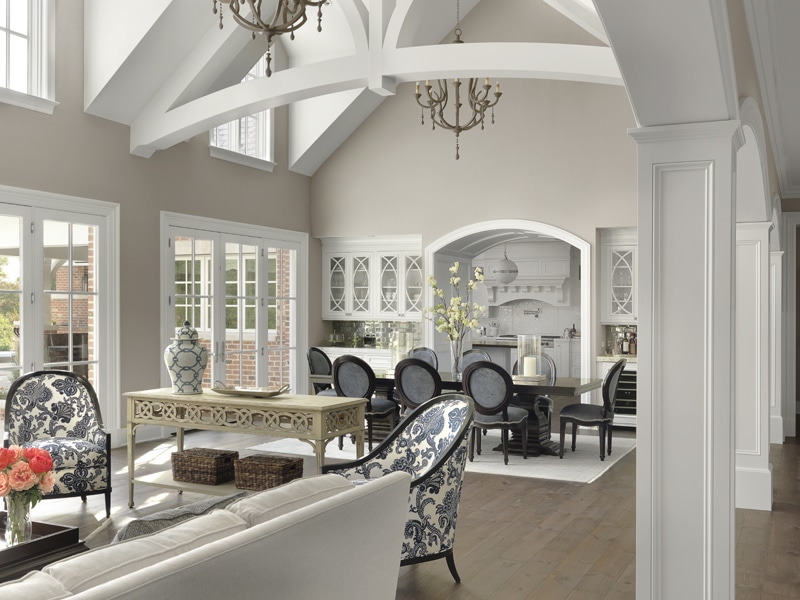R.E.A. Homes recently stopped by the St. Louis County Library to talk about green building practices. Jeff Bogard and Marc Bluestone of SmartHouse Heating and Cooling spoke on behalf of the Missouri Gateway Chapter of the U.S. Green Building Council. Being a part of the U.S. Green Building Council is part of R.E.A. Homes’ commitment as a custom homebuilder to continue our education and stay ahead of the curve.
Everyone deserves to live, work, learn and play in green and healthy spaces. This presentation was an opportunity for us to share how green building practices lead to the creation of these environments in our custom homes.
Here are a few highlights from the presentation:
Green Building Basics
What is Green Building?
The practice of creating and designing a building that:
- Consumes less energy and water
- Is durable and easy to maintain
- Is healthier for the occupants
- Uses materials responsibly
Impact of U.S. Buildings
Our buildings impact our lives – from our economy, to our health, to our environment. Buildings use 12% of our water. The energy used to run our buildings creates almost 40% of the emissions that cause climate change and air pollution.
In the US, we spend 90% of our time inside buildings, and studies indicate that indoor levels of pollutants may be up to 10x higher than outdoors. Our buildings have a really BIG impact on our health and our environment.
U.S. Buildings have a BIG impact:

Benefits of Green Buildings
The average green building can see a significant savings in energy, emissions, water use, and waste costs.

Building green affects more than just the environment: it affects the economy and it affects people. This is referred to as the “Triple bottom line” or a “Three legged stool.” These three areas – People, Planet and Prosperity, each enhance the other, and are all inextricably linked together

People
The first focus area of sustainability is people! Social benefits are sometimes less obvious and harder to measure. Here are a few to consider:
- Healthier indoor environments mean fewer sick days for occupants
- Improved air quality reduces asthma rates
- Individualized control of systems and lighting increase satisfaction and comfort
- For buildings where we work or learning, green strategies like higher indoor air quality and better lighting have been shown to increase productivity
Planet
The second area of sustainability, Planet, focuses on environmental impacts. Buildings don’t HAVE to have a big environmental impact. Green buildings have shown that there is a better way! Green buildings:
- Use less energy, like electricity and natural gas. This reduces the greenhouse gas emissions that contribute to climate change, and improves air quality
- Use less water, and produce less of the storm water run-off that creates flooding
- Produce less waste through smart consumption choices, recycling, and composting
- Encouraging alternative transportation – this reduces the emissions from vehicles
Prosperity
The third area of sustainability, Prosperity, focuses on economic benefits and realities. Green buildings have value to offer developers, constituents and investors, and users:
- Reduced waste and effective use of construction materials means a quality building at an effective or even lower cost
- Reductions in energy and use of resources translate into real savings over time
- Quality buildings built with durable materials require less maintenance, meaning that you spend less in operations and maintenance of your building
- Long term lower usage of energy means fewer new power plants and therefore lower energy costs
- Buildings that are attractive to employees and users make it easier to attract and retain quality staff and customers or stakeholders

R.E.A. Homes builds High Performance Luxury Homes℠ that provides a more luxurious, comfortable experience for every family. We carefully consider all of the best green building practices to ensure our homes create a healthier environment. To learn more about our custom built homes in St. Louis, MO, visit our blog or Facebook page.









